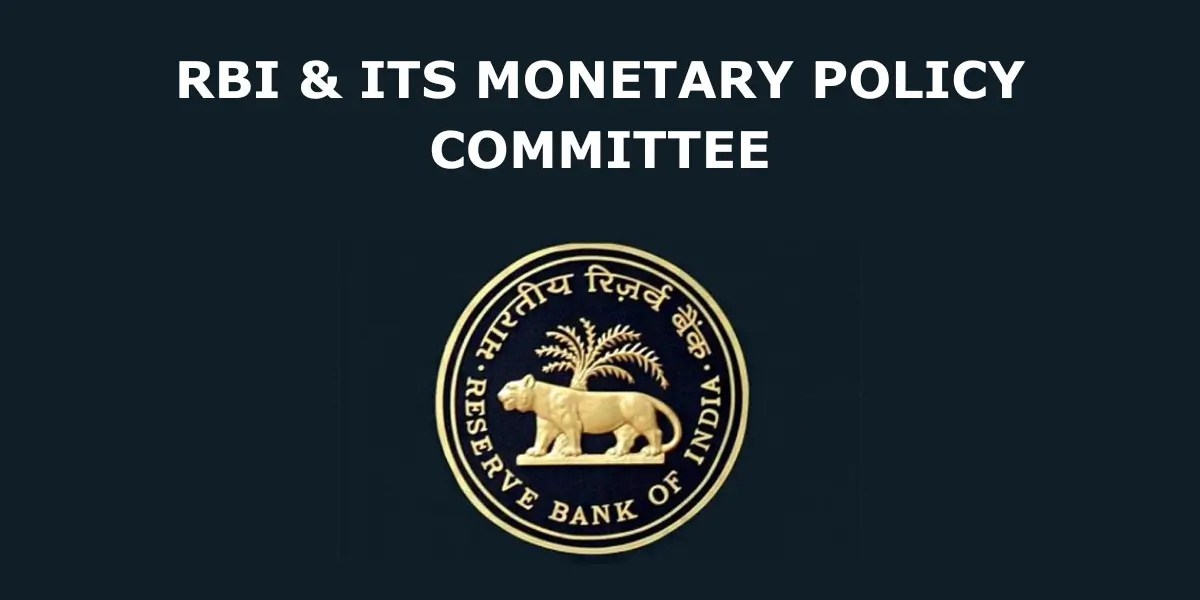#318: Monetary Police Committee
Revise today to not regret tomorrow
While you revise MPC, I invite you to join my Telegram
What is the Monetary Policy Committee (MPC)?
Definition: Statutory body u/ RBI Act 1934 (as amended by Finance Act 2016) to determine policy interest rate (aka repo rate) & achieve monetary police objectives
Purpose: Ensure transparent, accountable, and rule-based monetary policy decisions, primarily targeting inflation while considering growth.
Legal Basis: Section 45ZB of the RBI Act, 1934, mandates the MPC’s formation.
Composition of the MPC
Size: 6 members.
Members:
3 ex-officio members from RBI:
Governor of RBI (Chairperson).
Deputy Governor in charge of monetary policy.
One RBI officer (nominated by the Central Board of RBI).
3 external members:
Appointed by the Central Government based on recommendations of a Search-cum-Selection Committee (headed by the Cabinet Secretary).
Experts in economics, banking, finance, or monetary policy.
Tenure: 4 years, non-renewable; cannot be government employees.
Objectives of the MPC
Primary Objective: Achieve the inflation target set by the government, currently 4% Consumer Price Index (CPI) inflation with a tolerance band of ±2% (i.e., 2%–6%).
Set under the Flexible Inflation Targeting (FIT) framework, adopted in 2016.
Secondary Objective: Support economic growth and employment, subject to maintaining price stability.
Review: Inflation target is reviewed every 5 years (next review due by March 2026).
Functions of the MPC
Set Policy Rates:
Determines the repo rate (rate at which RBI lends to banks) and other rates (reverse repo, MSF, etc.).
Uses tools like Cash Reserve Ratio (CRR), Statutory Liquidity Ratio (SLR), and Open Market Operations (OMO).
Meetings:
Meets at least 4 times a year (typically bimonthly).
Quorum: 4 members; decisions by majority vote (Governor has a casting vote in case of a tie).
Minutes published within 14 days, ensuring transparency.
Policy Stance:
Decides monetary policy stance: Accommodative (growth-focused), Neutral, or Hawkish (inflation-focused).
Example: In 2024–25, RBI maintained a neutral stance to balance inflation and growth (check RBI’s latest policy for updates).
Inflation Targeting:
Monitors CPI inflation and forecasts trends.
If inflation breaches the 2%–6% band for three consecutive quarters, RBI must submit a report to the government explaining reasons, remedial actions, and recovery timeline.
Monetary Policy Tools
Quantitative Tools (affect money supply):
Repo Rate: Rate at which RBI lends to banks.
Reverse Repo Rate: Rate at which RBI borrows from banks.
CRR: Percentage of bank deposits held with RBI.
SLR: Percentage of net demand and time liabilities held in approved securities.
OMO: Buying/selling government securities to control liquidity.
Market Stabilization Scheme (MSS): Absorbs excess liquidity.
Qualitative Tools (affect credit allocation):
Credit rationing, moral suasion, direct action.
Liquidity Adjustment Facility (LAF):
Repo and reverse repo operations to manage short-term liquidity.
Key Milestones
2015: Urjit Patel Committee recommended FIT and MPC.
2016: RBI Act amended; MPC formed, FIT adopted (4% ± 2% target set).
2021: Inflation target retained till March 2026.
2024–25: MPC navigates global slowdown, domestic inflation
Challenges
Inflation Pressures:
Food and fuel price volatility (e.g., vegetable prices in 2024).
Supply-side shocks (e.g., monsoon variability, global commodity prices).
Growth vs. Inflation Trade-off:
Tight policy (high rates) may curb growth; loose policy risks inflation.
External Factors:
Global monetary policies (e.g., US Fed actions).
Currency fluctuations impacting imported inflation.
Data Limitations:
Accurate forecasting of CPI inflation is challenging due to volatile components.
Coordination:
Balancing RBI’s autonomy with government’s fiscal policy (e.g., high fiscal deficit may fuel inflation).


